You want to become a freelance writer, huh?
Do you think you have what it takes?
It’s an extremely rewarding career path, filled with great money and recognition — but few pursue it to that point.
8 and out of 10 business ventures fail. Do you know why?
Because most quit before they’ve gotten any momentum or their first client. They get scared, nervous, or are afraid of a little hustle.
This is business. It takes work and patience, but you can do it. Do you know how I know? Because I’ve been professionally writing for 6+ years and it feels like yesterday I was in your shoes.
I’ve undersold myself, failed countless times, and was new at one point in time.
Nowadays, I’ve written for GQ Magazine, Neil Patel, Marketo, and other big brands.
This guide is going to teach you how to start freelance writing, land clients, and generate income, even if your brand new and have no experience.
Decide on your expertise
Freelance writing is a very wide career. What I mean by this is that you aren’t just a freelance writer, you might be a freelance B2B content writer, a freelance direct response copywriter, or a freelance e-book writer.
That’s the first step: decide on your expertise and niche.
What do you enjoy the most? Where’s your expertise?
Here’s a deeper explanation of the various types of writing you can do as a freelancer for inspiration.
Blog writing
I do a lot of SEO blog writing. I normally charge $0.25/word and it nets me well over $100/hour at that rate.
You can easily achieve this kind of income if you follow the steps I lay out ahead.
As a blog writer, you create content that helps client get more organic traffic from search engines, newsletter optins, demo downloads, or achieve other goals.
Brand awareness, thought leadership, and building trust with their audience are common interests your clients will probably have.
Blog posts can range from 500 words to 3,000+ on average. And no, it isn’t easy. At least if you’re new.
You might think “Oh, it’s just a blog post. Anyone can write those.” But, there’s a massive difference between a newbie writing an article and someone like Neil Patel.
There’s hundreds of strategies, tactics, and copywriting skills that expert writers use to make content more useful and interesting. If you don’t know them, your posts will suck.
All I’m saying is don’t get ahead of yourself. I still cringe thinking about content I wrote just a couple of years back. You’re never perfect and always have room to improve.
I will say one thing about blog writing, though: it can be very under appreciated.
Many businesses see it as a cheap commodity and will want you to work for slave labor prices. Avoid these types of clients at all costs. A company that truly values inbound marketing will pay a premium for high quality articles.
Copywriting
Copywriting is the practice of writing to achieve business goals. Sales, of course, is usually the focus.
But, other things businesses strive for are leads(potential clients) and brand awareness. How you write copy drastically changes depending on what your client wants.
As a copywriter, you’ll be writing material like:
- Sales letters
- Landing pages
- Product description
- Web pages
There’s a saying that the closer you are to the point of sale, the more money you can make. This is very true in writing. It’s not uncommon for high level writes to be paid tens of thousands of dollars for a landing page.
It might sound crazy to some, but it makes sense.
Let’s say the imaginary company Harry’s Horses hires a copywriter to write a sales letter to sell a new saddle. Random example, but keep with me.
They pay the writer $10,000 and the business ends up generating $50,000. That’s one hell of a ROI.
If you enjoy writing content with the purpose of selling, this is a good route for you.
Technical writing
This involves writing manuals, instructions, and material that, as you could guess, is technical.
It’s supposed to teach the user how to use something, such as software or physical product.
Have you ever put together something from Ikea or similar?
Then you’ve read technical writing before. Someone took the time to write out that manual or guide to help you piece together the furniture.
It’s not the sexiest form of writing, but it can pay well.
Authoring
Freelance writing e-books for yourself or clients can be very profitable. There were over 266 million e-books sold in 2017 alone.
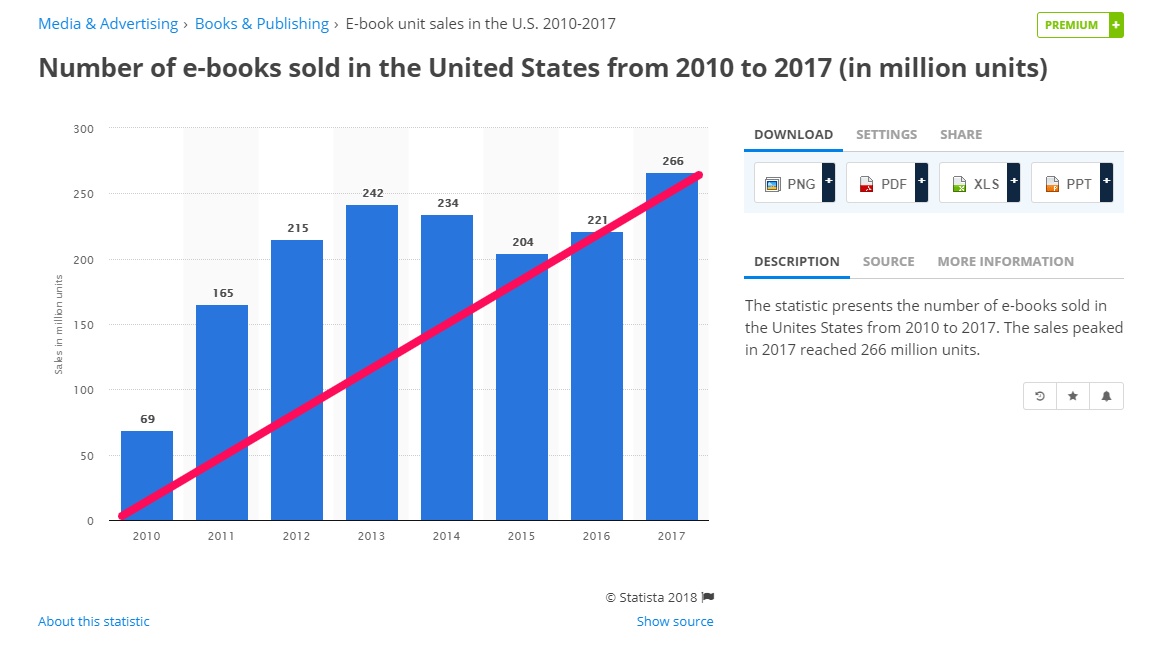
While it’s had some ups and downs, it’s consistently gone up. And there’s nothing stopping you from writing physical books, but e-books obviously have a lower barrier to entry.
I’ve self published many books on business and marketing. They bring me in a steady flow of passive income which I can’t complain about trickling into my bank account.
There are definitely less opportunities to ghostwrite books for clients, but they do exist. Avoid any companies that want to pay you insanely cheap rates, there’s been a few of them hanging around lately.
The average ghostwritten fiction book costs $36,000 to $100,000. There’s some serious money for good authors if it’s something you’re passionate about.
Put together a portfolio
Once you’ve decided what style of writing you’d like to pursue, it’s time to create a portfolio.
I know what you’re thinking, “Wait, I don’t have a portfolio!” That’s okay. You might actually have more of a portfolio than you think.
Have you ever written a blog post, assignment for school, or anything in general?
That means you have portfolio pieces.
They should be relevant to what niche you want to pursue, but it’s okay if they aren’t — as long as they’re high quality writing.
What I’d also recommend is writing new articles from scratch. You can show these to clients when you pitch them, which I’ll be teaching you in a moment.
First, here’s a few different ways you can piece together a portfolio.
Google Drive folder
If you’re on a budget, Google Drive is your friend.
The idea is to create a shared folder that contains all of your work. You can easily send the link to prospects, making this a great strategy for beginners.
Head over to Google Drive and create a new folder. Give it a name like “Portfolio.”
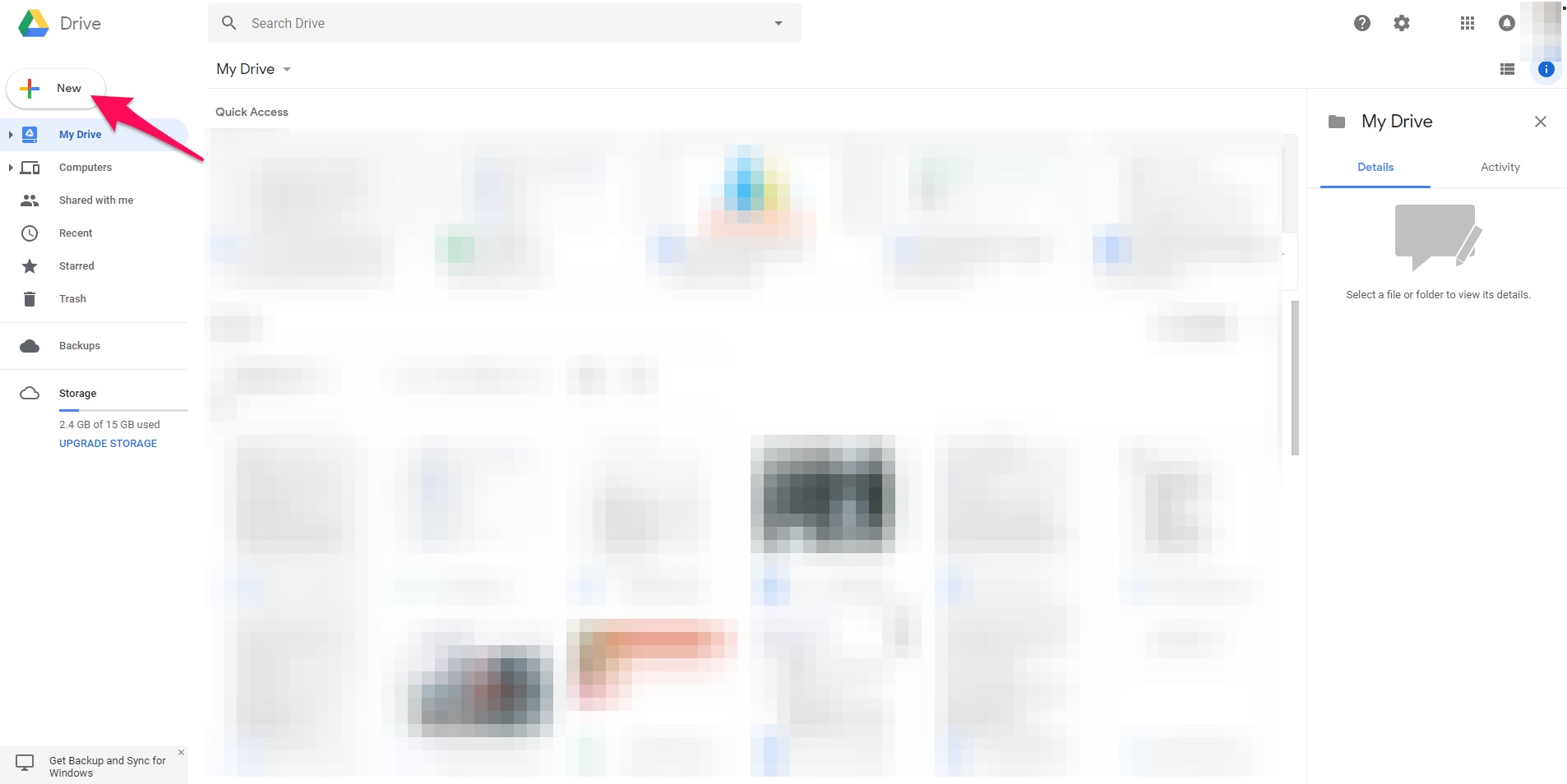
You can add files of your previous work as docs, but I’d also suggest creating a spreadsheet. It should have a few rows, such as:
- Publication: What website, magazine, or company did you write for?
- Topic: The topic or product you wrote about.
- Date: The date your writing was published.
- URL: A link to the finished piece.

Feel free to make it look fancy, but remember this age old copywriting principle: ugly and simple sells. If you’re a great writer, no one will bat an eye if your portfolio looks like it was made by a 2nd grader.
Create your own website
Any serious writer will have a personal website. It helps build your brand, clients take you more seriously, and it acts as a business asset(More on that later.)
You don’t have to be Bill Gates to create a website these days, either.
It literally takes a few minutes and about $20.
It’s wise to do this sooner than later, so you can compound your SEO, content, and get found by more prospects.
The first step is to decide on a domain name. You can use your actual name, like www.carminemastropierro.com, or a branded name like www.mastrodigital.com.
This will cost you roughly $10 to $15 for an entire year. They’re very cheap.
Then you need web hosting. A company that will host your site on their servers.
Hostgator, Bluehost, and 1and1 are my personal favorites. I literally just starting using 1and1, but I think I like them more than the others already.
Visit their homepage and select the WordPress hosting from the “Website Builder & Hosting” menu.

There are three plans available. Each one has increasingly more resources and features.
If you plan to run just your freelancing site, the first option is best.
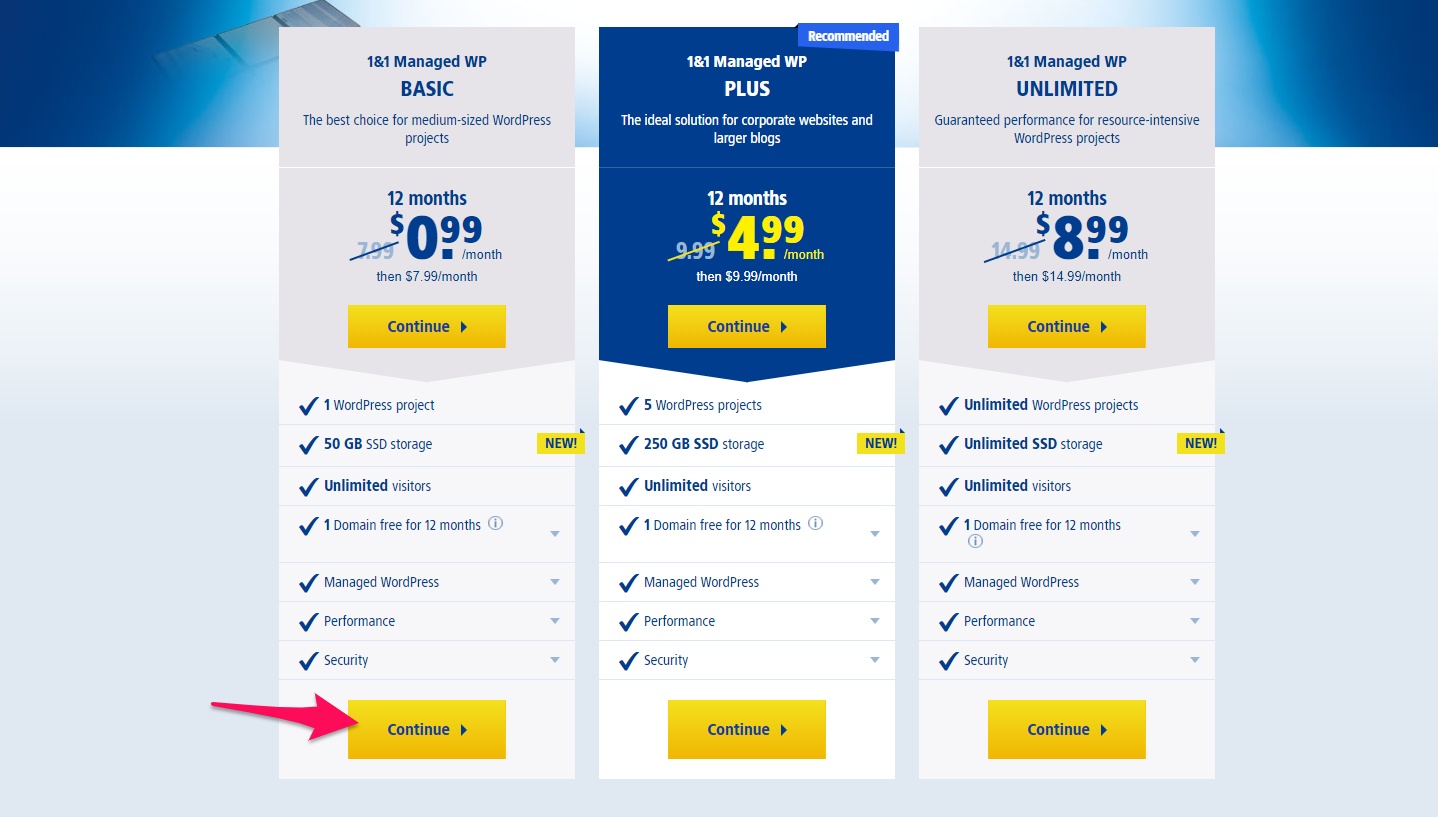
On the next page, search your domain name to ensure that it’s available. “.com” is universally recognized and the best extension to choose.
Add that badboy to the cart, hit “Continue” and then checkout like any other website.
1and1 will send a confirmation email to verify your domain afterwards. Make sure to complete that step.
Install WordPress and create an admin account. You will use this to log in from your domain followed by “/wp-admin”
Creating a WordPress website is a whole other beast of its own. This guide from WPBeginner is probably the best one you’ll come across.
Investing into a paid theme will also help your branding, and you can make a cool logo with free tools like Canva.
Don’t get too obsessed with your site. It just needs a portfolio page, about page, a blog, and a homepage that sells what you do.
Get your social media game on lock
Billions of people use social media worldwide. Over 24 billion to be exact.
Your ideal clients are awaiting to find your on these networks. But if you don’t have accounts, how will they?
You don’t need to be active on every website, just the main ones. Let’s begin with Twitter.
It’s a great medium for engaging with clients and finding freelance writing gigs.
Social media in general is also a fantastic tool for sharing your work and archiving your portfolio.
Add a professional profile picture and nice cover photo. Remember, people use social media to be social. You shouldn’t be stiff and only promote business content.
Mention what you did on the weekend, post photos with friends, and show the real you. People want to connect with other people, not robots.
Add a link to your website and an interesting bio. I like to use hashtags to come up in more searches, too.
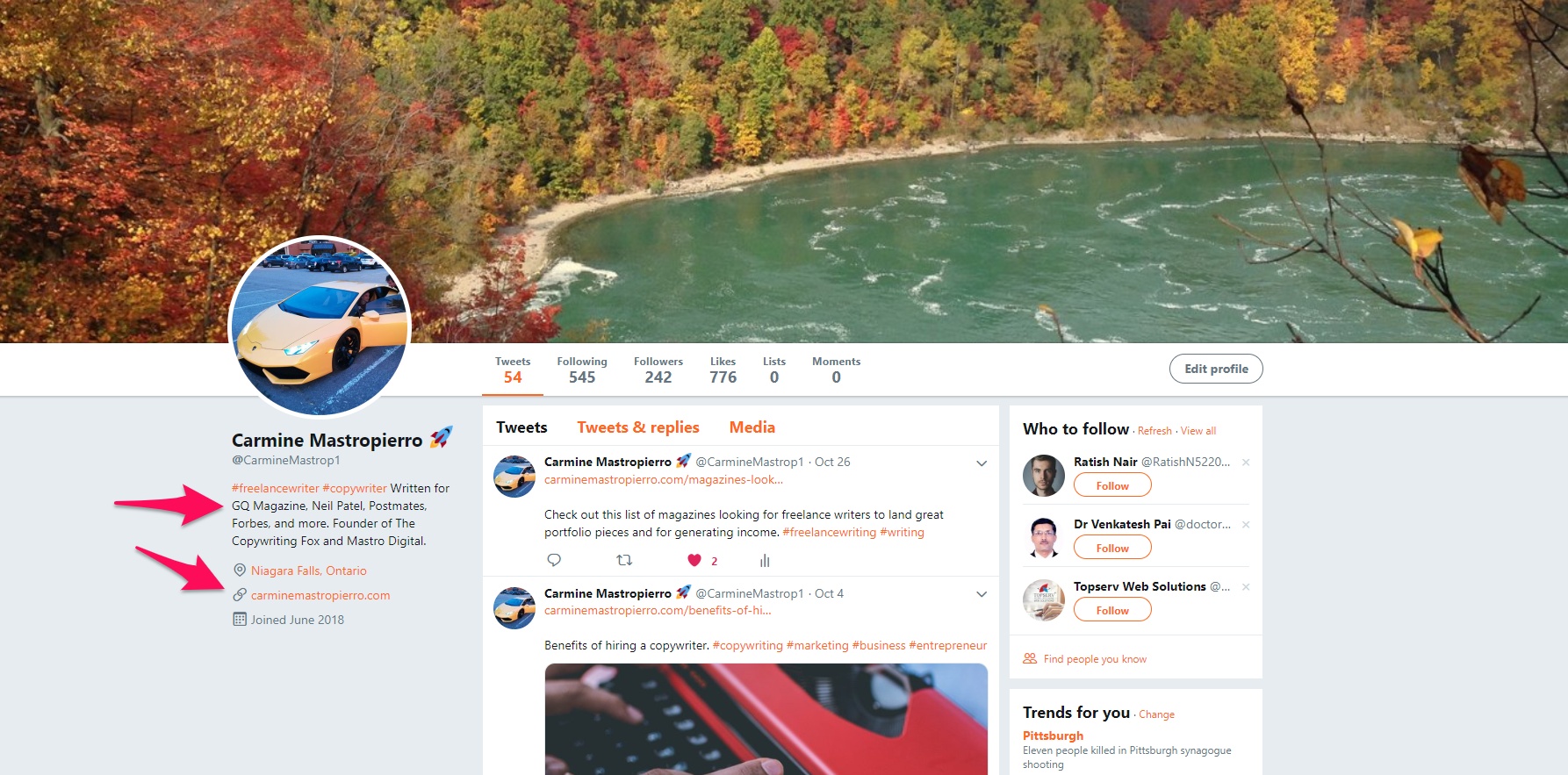
To begin racking up your follower count, all you have to do is follower other users. This uses with one of the most powerful aspects of human nature; the Law of Reciprocity.
A.K.A, people like to give back. Those crazy animals are nicer than you think.
When follow another person, they get a notification and will likely follow you back.
I recommend first finding a larger player in your niche. This could be an influencer or an individual company.
Then, go to their list of followers and start clicking away.
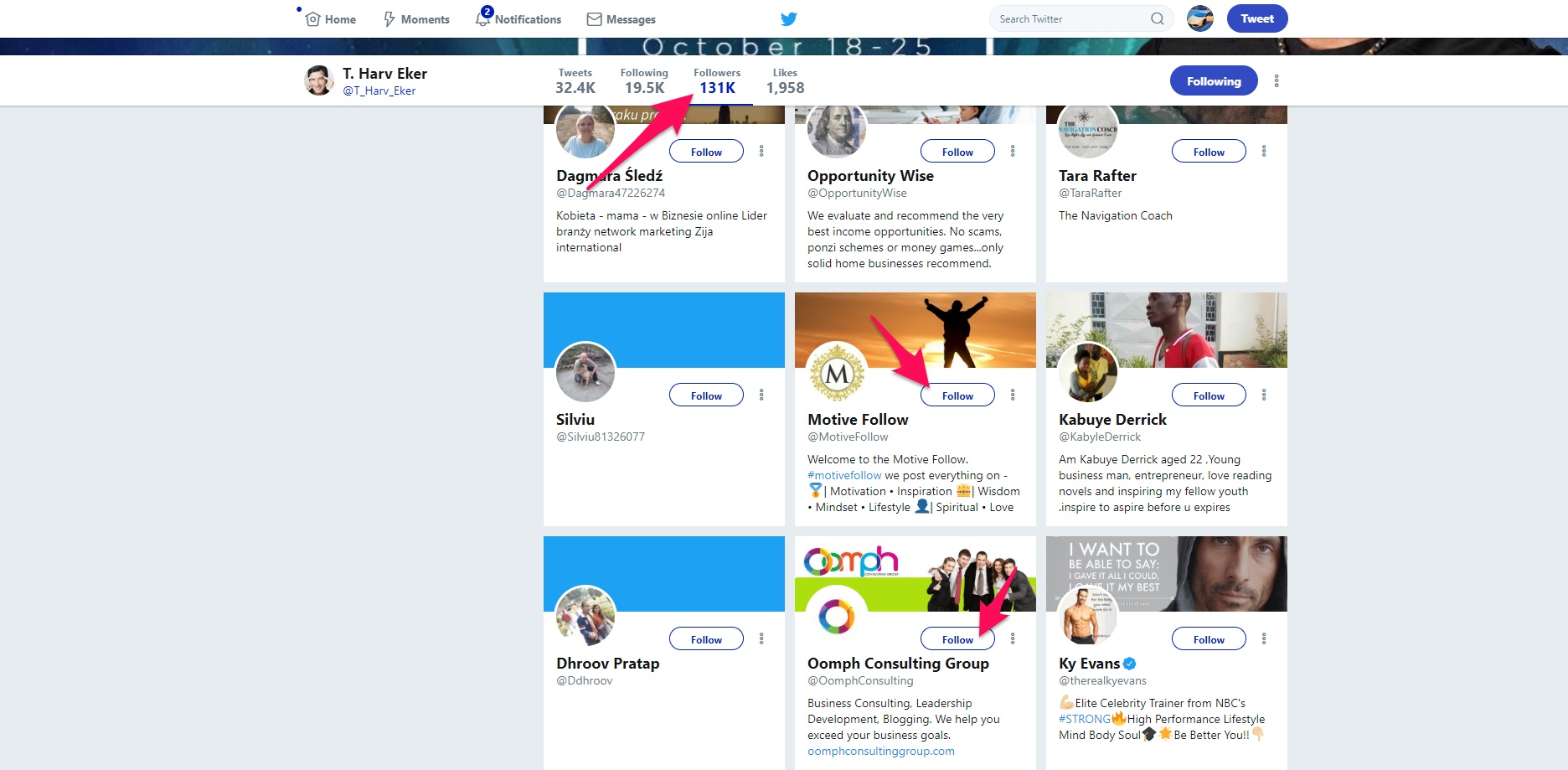
The key is to also engage with other users. Tweet at them, reply to comments, and like their content. You’ll stay on their radar and they’ll appreciate that you’re active.
Check out this infographic on social media engagement, too. Invespcro found that Tweets with 1-2 hashtags get 21% more engagement.

Perhaps most obviously, you also need a Linkedin account. Heck, it’s literally made for networking.
Fill out the form on the homepage to create an account.

The next step is to create a profile that impresses potential clients and attracts them to your page. More on that in a moment.
Not to toot my own horn, but I think mine is a pretty good example 🙂
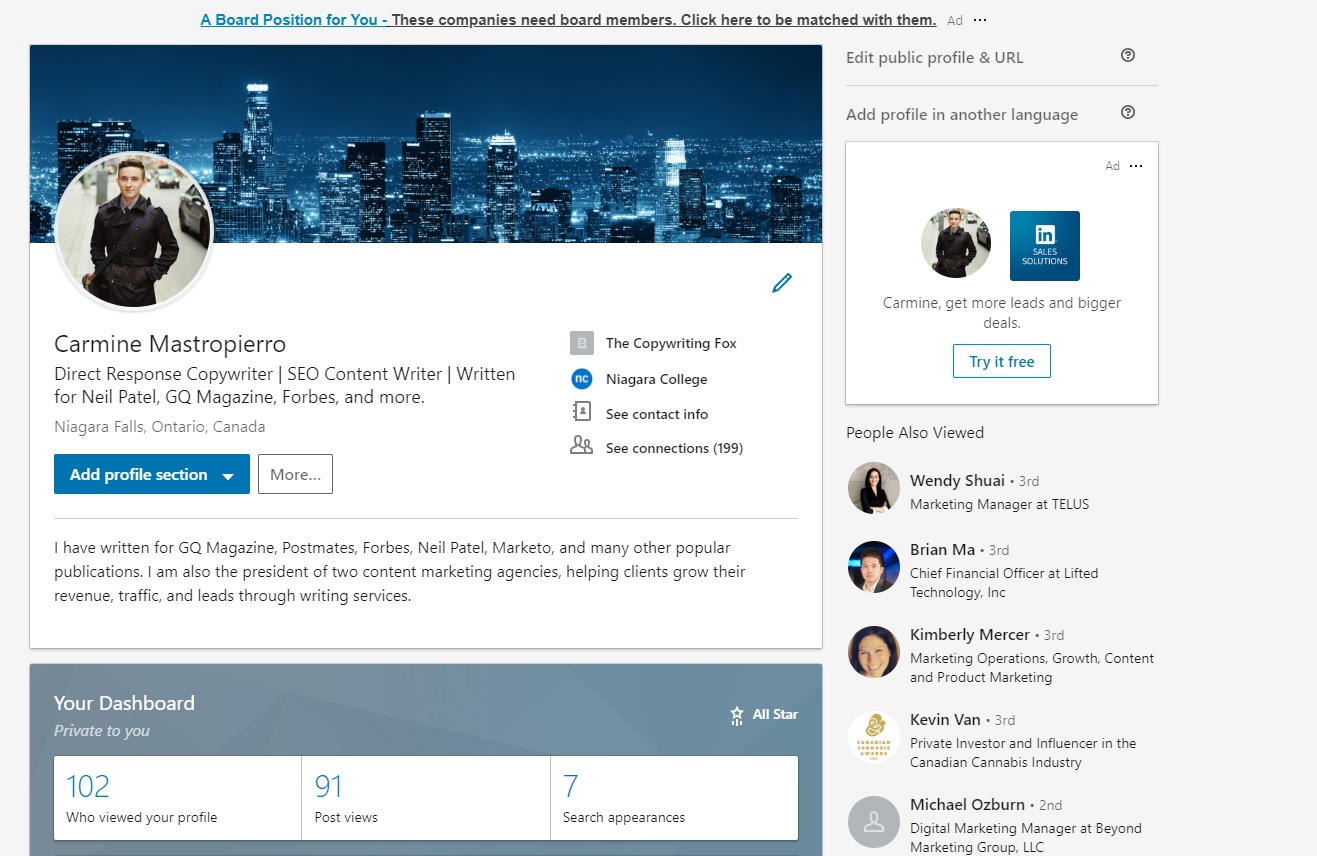
Here are some key takeaways:
- Profile picture: Avoid selfies and photos of you 5 shots in at the club. Save those for Facebook. You want to look professional and build a clean brand image. I recommend paying a photographer for high quality pictures.
- Cover photo: This should be something simple and non-distracting. I used a stock photo of the Toronto skyline because it’s near where I live.
- Headline: This will draw people in and create interest. It should state exactly what you do, and feel free to mention any impressive credentials.
- Description: Summarize what you do within a paragraph. It’s also wise to tie in the benefits of working with you, so users become more enticed to reach out.
Notice that in my headline, I didn’t just put “copywriter” or “freelance writer.” That’s a surefire way to blend into the crowd and never be discovered. Instead, I focused on using longtail keywords.
If someone searches for “direct response copywriter” or “SEO content writer”, there will be less results and allows me stand out more. You’d be surprised how many leads you can get by doing this.
Fill out your work and education history. Add as much relevant experience as you can to wow anyone that lands on your profile.
Just like with Twitter, you need to start following others, or connect as they call it on Linkedin.
My approach is to search for decision makers in my niche and send them a connect request. I’ll use keywords like “Editor in chief” or “VP of marketing.”
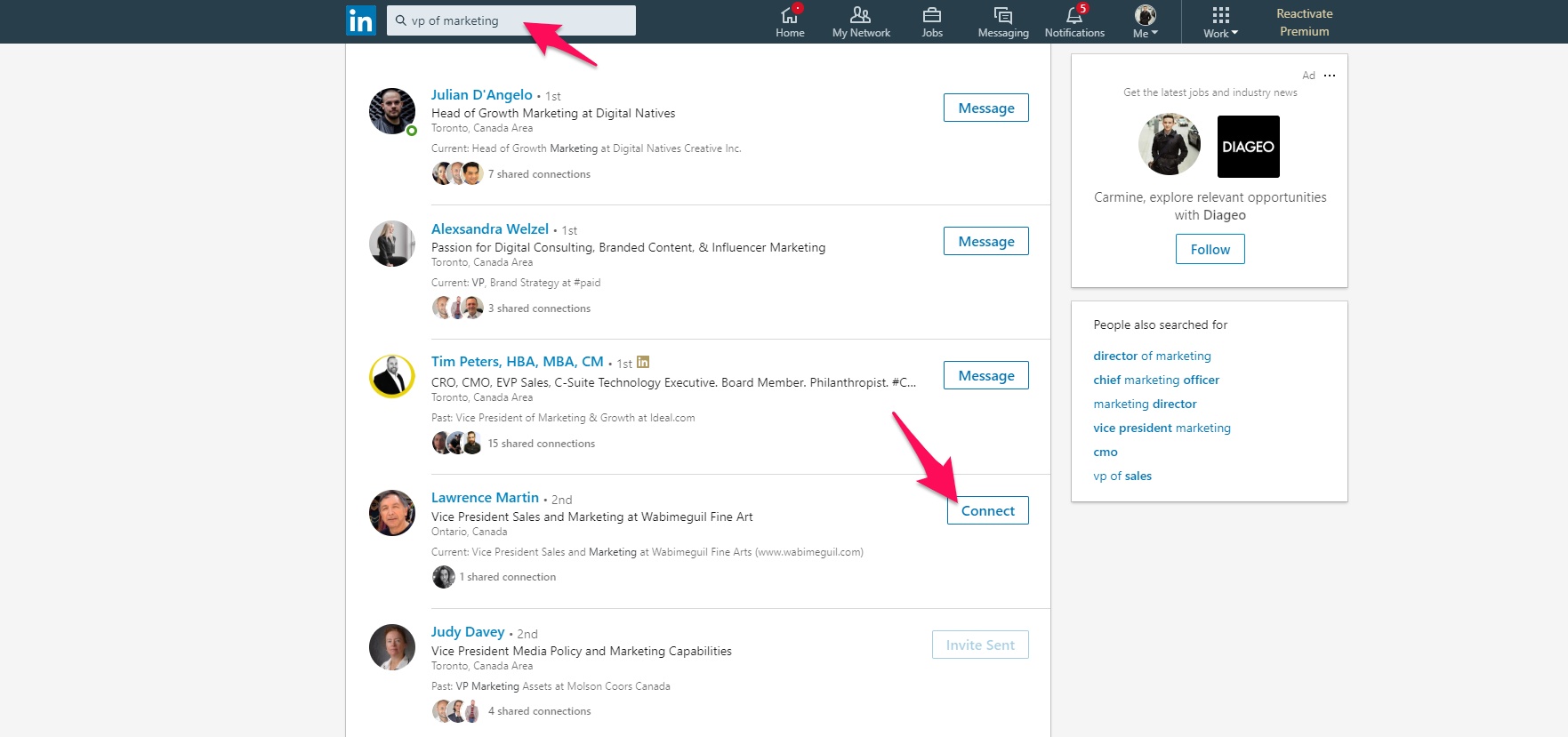
You don’t need to put too much effort into social media right now. Just get your accounts up and ready to use.
Now I’m going to teach you how to start getting freelance writing gigs.
Landing your first writing client
Getting your first client is exhilarating. It shows that your hard work paid off and gives you a lot more confidence to keep hustling.
The best way to acquire clients as a beginner or immediate is through job boards. These are where businesses list writing opportunities and you apply for them.
But, there’s tons of competition. You need a good pitch to cut through the sea of other freelancers.
Let me tell you something, though.
A lot of people applying to these gigs have no real world experience, portfolio, or aren’t native English speakers.
If you have some work to show and speak native English, wipe your forehead. You’re already ahead of most.
Writing job boards to check out
These are some of the best job boards to find writing gigs. I’ve used them all in the past with massive success — to the point where I couldn’t take on all of the work I was offered.
ProBlogger
One of the most renowned freelance writing websites on the internet. They charge $70 to create a job listing, so it tends to weed out the cheap and unprofessional clients.
It’s absolutely free as a freelancer, too. Click the link above to jump straight to the jobs section.
They display the position that’s being offered, what company made the listing, and when it was published.
I suggest applying to listings that are as recent as possible, since older ones most likely have already been filled.
But as you’re probably brand new to ProBlogger, feel free to go back and send a pitch to gigs a month old or less.
It is absolutely crucial that you read the job description. It sounds obvious, right? You’d be surprised how many people skim past it and miss important rules.
For example, this listing is only accepting writers that apply with a resume, samples, and rates sent to their email — not the ProBlogger application form.
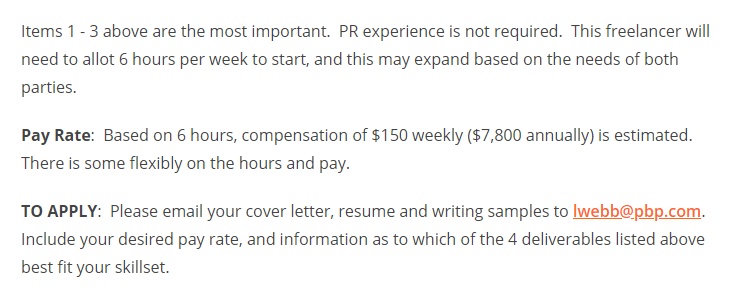
BloggingPro
Next on the list is BlogginPro. Don’t worry, I mix it up with ProBlogger all of the time.
I don’t find it to be nearly as active as other sites, but it’s consistent. Larger companies post on there frequently with high paying gigs, so keep it in your rotation.
Freelancewritinggigs
A wonderful woman named Noemi runs this website. She compiles all of the latest writing gigs, jobs, and contracts from popular sites, and puts them on one neat page.
You’re bound to find a ton of opportunities by stopping by and reading the latest post.
She organizes them by type, such as blog posts, internships, journalism jobs, and more.
Freelance writing sub-reddits
There’s a sub-reddit for everything. And that means writing, too.
I’ve taken the time to search for all of the best freelance related parts of Reddit to promote your services in.
These are also great to check for gigs, as people commonly search for writers on them — not just the other way around.
Sign up for an account if you haven’t already and visit these sub-reddits:
- /r/hireawriter
- /r/writersforhire
- /r/hiring
- /r/forhire
- /r/b2bforhire
- /r/jobbit
- /r/freelance_forhire
Create a new thread from the top right and follow the rules of each sub-reddit.

Mention your skills, experience, how much you charge, and what your turnaround time is. Don’t be afraid to say that you’re a new writer, as many businesses welcome fresh ideas and freelancers.
Most of these sub-reddits only allow you to post once per week. Don’t push that. You can get banned and you’ll lose a great opportunity to get clients.
All Freelance Writing
This job board gets a new listing roughly every week. The jobs range from low to high pay, making it worthwhile to check every now and then.
They also have a freelance writer directory that you can pay to be placed in.
This has the potential to expose you to many leads. I haven’t used it my self, but I thought I would mention it — it might be worth the investment.
Pitching freelance writing clients
Job boards will get you consistent work, but they can be flaky.
There’s no guarantee you’ll get a response or work. That’s why sometimes you need to take matters into your own hands.
How?
I know, I know. You probably think emailing potential clients doesn’t yield good results.
Honestly, it won’t. Unless you do it right.
Not too long ago, I read a book called Predictable Revenue by Aaron Ross. It seriously changed how I operate my businesses.
He calls his approach cold calling 2.0 — emailing the decision maker of a business(or getting referred down to them), researching if there’s a fit between both parties, and scheduling a discovery call.
You don’t sell right away. You don’t spam their inbox with a copy and paste message.
You research, take your time, and be genuine. It’s helped me land so many clients that I had to hire writers and quickly learn how to manage a team because there was too much money on the table.
Money started to flow in like Niagara Falls.
Finding leads
The first step is to find actual businesses to pitch. While you can buy expensive services like ZoomInfo, I think it’s better to start off with something free like LeadFerret.
LeadFerret gives you access to a crowd sourced database of leads that you can filter more than your morning coffee. Register for an account right now.
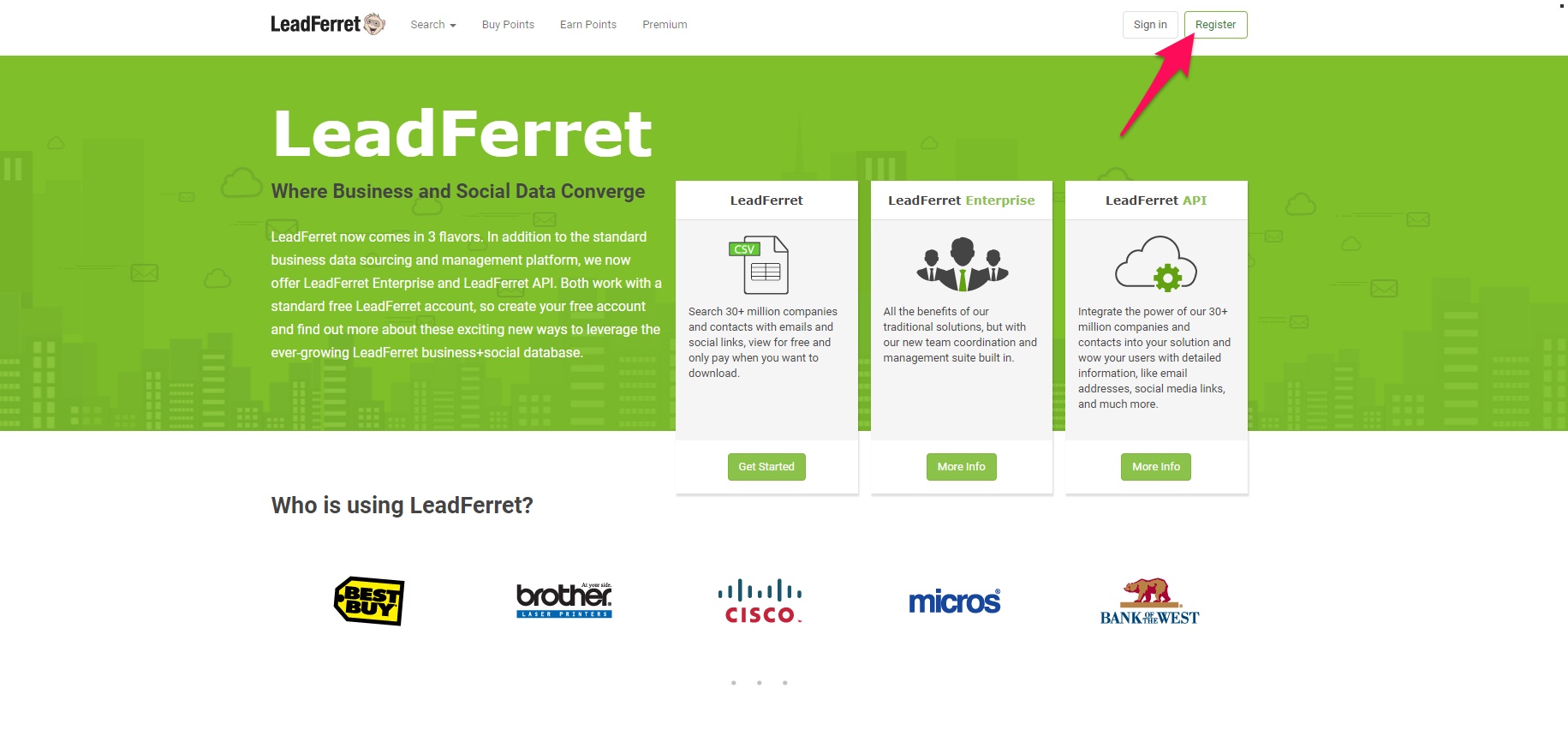
If you want to download lists, you’ll have to either pay or earn points. You can earn points by entering in leads into the database.
See how that works? It entices other people to contribute, strengthening the overall quality of contact information.
And just look at this filtering system. I feel like I’m navigating an airplane cockpit.
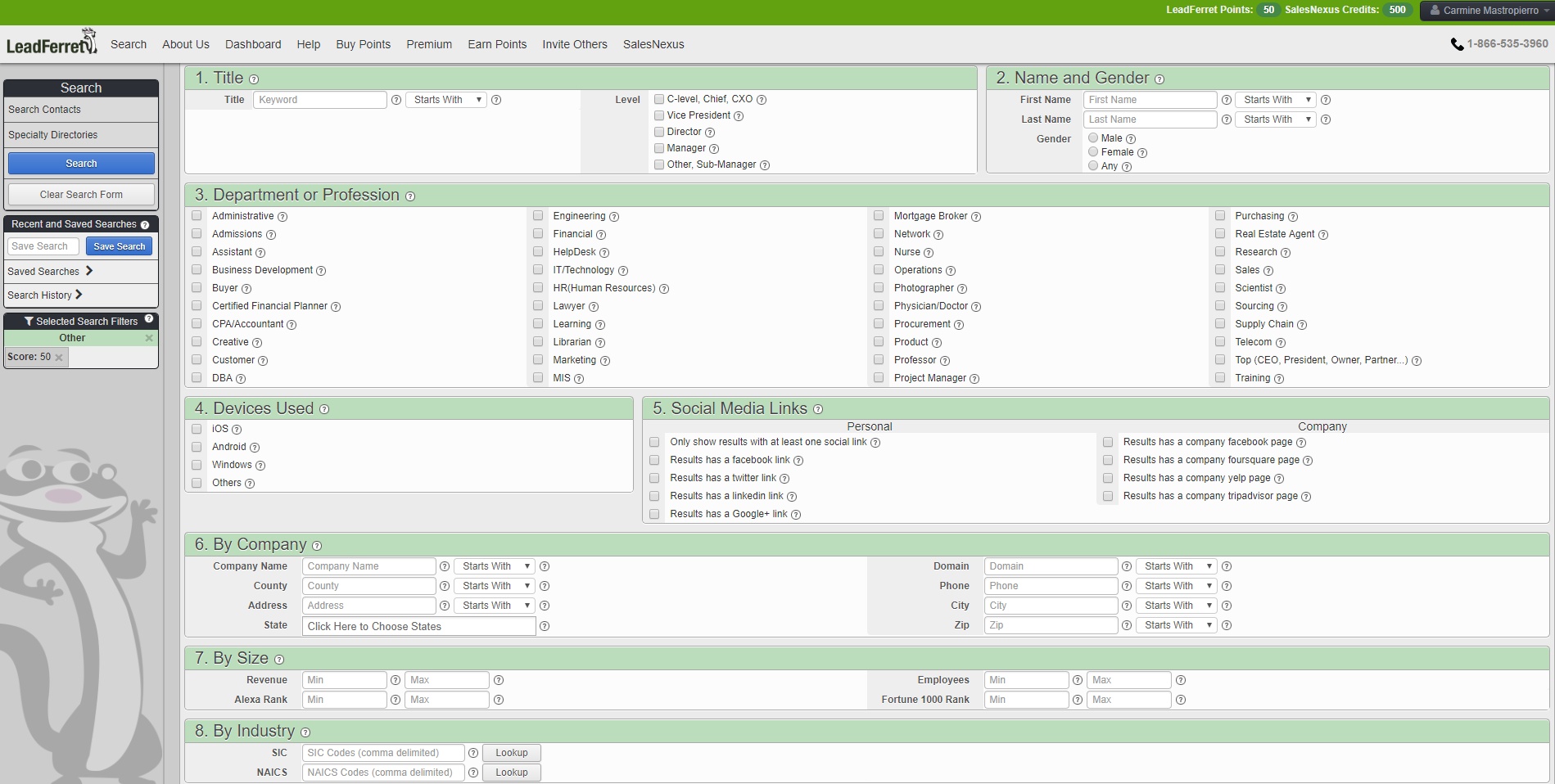
You can narrow it down to someones exact position, social media, company size, and more.
Since you’re pitching writing services, I would recommend making the following filters:
- Department or profession: Marketing
- Title: C-level, Vice President, director, and manager
I like to be picky with the amount of employees and revenue because it allows me to find higher budget clients, but you can leave them blank for now.
Hit the blue search button after and you’ll get hundreds of thousands of leads.
Yup, you read that right.
Click anyone name to get their contact information. Write these down in a spreadsheet to use in a moment.
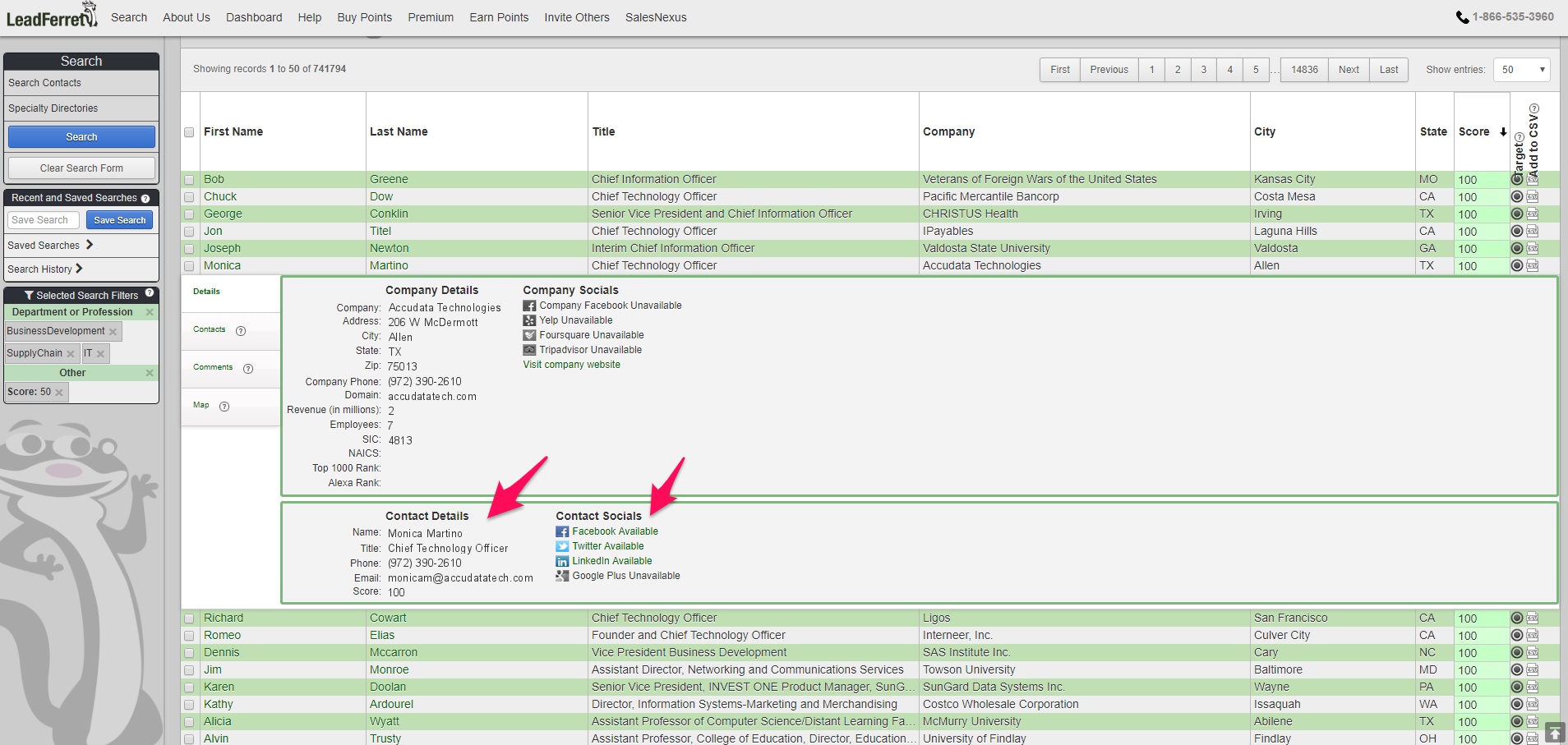
Making the pitch
With emails in hand, let’s make some money!
Remember, never try to sell right away. I get a couple dozen of copy and paste emails every day, and do you know what happens to them?
They go right into the garbage bin.
Here’s the exact template I use when I first make contact with a lead.
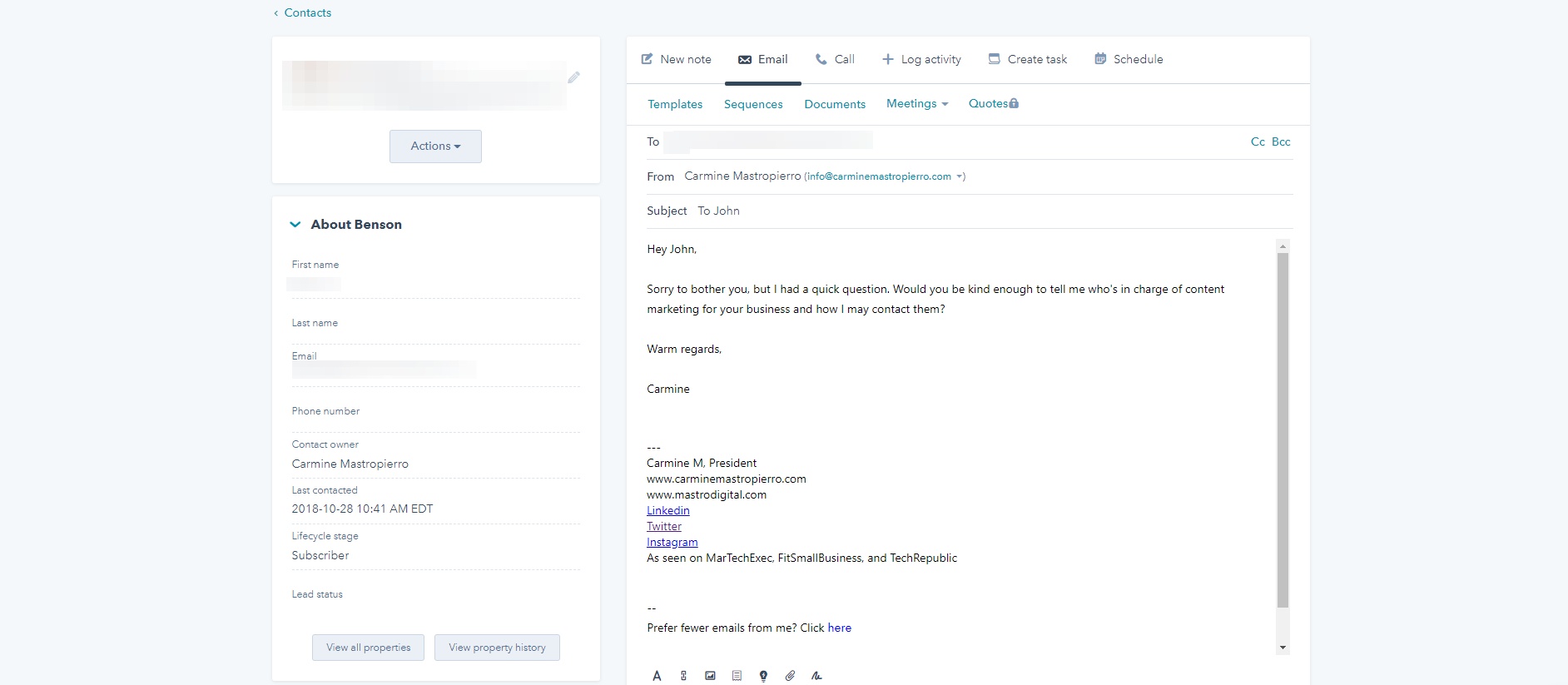
It’s simple, non-intrusive, and it shows that you respect their time.
I get a very positive response from this template. Usually they will forward me to right person or give me their information.
Remember, this is for the long haul.
I’ve had clients that I’ve closed in as little as a day or two, and some that take months.
44% of salespeople give up after one follow up, as well.
It can take upwards to 5+ follow ups before you close them. So, BE PATIENT.
The goal is to get the CMO, content manager, or someone of a similar position on the phone.
Ask questions like:
- What are your content goals?
- What have you struggled with regarding content?
- What’s your experience working with freelancers?
- Do you have a buyers persona that I can look at?
Explain to them your rates, expertise, and how you can help solve any content issues they’re having.
As my great friend Evan Pappas says, you want to be a business therapist.
No one is taking this approach, and it’s going to make you stand out in an amazing way.
Contracts, rates, and invoicing
Never, ever, ever, ever, ever do work without a contract.
You’re just begging to be scammed.
I’ve had it happen to me in the past(Only once, thankfully) and have heard way too many horror stories of freelancers not getting paid for their hardwork.
Don’t be the next victim.
Contracts don’t have to be complicated and only readable by a lawyer with 30 years of experience.
That’s why I avoid the word contract altogether. I like to say agreement.
It’s much more friendly and less intimidating.
I use this short form design contract.
Tailor it to your client and project. Send it to them as a PDF and have it sent back signed.
In the contract, you’ll have to say the rate you charge. Many freelancers get hung up on this. You can either:
- Charge by hour
- Charge by word
- Charge per project
I wouldn’t say either is better than the other, it’s mostly preference.
I personally do payment based on the scope of the project or per word.
When you’re first beginning, it’s easy to do work for free or cheap. Don’t do it.
Don’t undervalue yourself. Charge at least $0.10/word and build from there as your portfolio grows.
Invoicing is super easy, too. Use one of the following free tools:
These are universally trusted and have other nifty features like automated reminders.
Wrapping all of this up
Are you excited? You should be!
Freelance writing is a lot of fun and very profitable once you get the ball rolling.
The first thing you need to do is create a portfolio. Do this in Google Drive or create your own website.
Even if you don’t have anything to show, you can write pieces from scratch. Don’t be afraid to use old essays, assignments, or some kind of written work — it is something, after all.
Create social media accounts for Twitter and Linkedin. You could create a Pinterest, Facebook group, and more if you want. The goal is to use these networks to share content, pitch leads, and engage with the writing community.
Then, it’s time to find some work. Use job boards like ProBlogger and BloggingPro to land some clients. Pitching businesses with the help of databases like LeadFerret is also crucial.
Be patient. Most people quit before they really even begin. I believe in you because I was once in your shoes and know how hard it can be.
Keep hustling, stay positive, and go get you some freelance writing clients 🙂
Contact me if you require content writing services to help grow your traffic, leads, and revenue.


